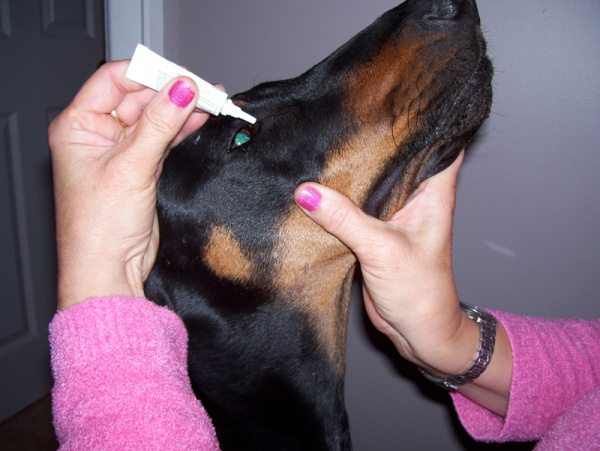Atropine Sulfate Ophthalmic Preparations
Why has my veterinarian prescribed this medicine?
Atropine sulfate is used in the eye to dilate the pupil. It may also be used to control pain in the eye due to corneal and uveal disease and in treating secondary glaucoma.
How do I give this medication?

"Wash your hands before and after administering atropine...Keep pets out of bright light while receiving this medication."
- Instill the medication in the pet's eye(s) as directed by your veterinarian. READ THE LABEL CAREFULLY.
- Wash your hands before and after administering atropine.
- Do not touch the eye with the tip of the dropper or the tip of the ointment tube.
- DO NOT give the pet more medicine than directed and do not give more often than directed.
- Try not to miss giving any doses.
- After administration of the medication, maximal dilation occurs in about 1 hour in dogs and may persist for up to 120 hours. In cats, dilation may persist for up to 144 hours. Since the pupil is dilated, the pet will be very sensitive to sunlight. Keep pets out of bright light while receiving this medication.
What do I do if I miss giving a dose?
Give the dose as soon as possible. If it is almost time for the next dose, skip the missed dose, and continue with the regular schedule. Do not give the pet two doses at once.
How do I store this medicine?
- Keep this medicine out of reach of children.
- Store this medicine in a tight, light resistant container.
What are the potential side effects?
- If the eye drops get into the mouth, the animal may salivate.
- Atropine may decrease tear production.
- If the pet receives too much atropine, dry mouth, constipation and vomiting may occur along with changes in heart rate and rhythm, increase in body temperature and the inability to urinate.
- Other side effects may occur. If you notice anything unusual, contact your veterinarian.
Are there any possible drug interactions?
- Make sure to tell your veterinarian what other medication you are giving to your pet.
- Quite often, your veterinarian may prescribe two different medications, and sometimes a drug interaction may occur. In this case, your veterinarian may vary the dose and/or monitor your pet more closely.
- Contact your veterinarian if your pet experiences any unusual reactions when different medications are given together.
|
© Copyright 2009 Lifelearn Inc. Used and/or modified with permission under license. |






